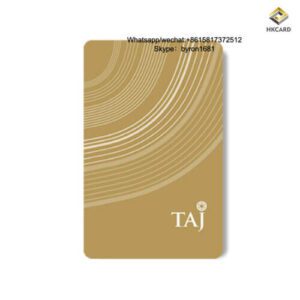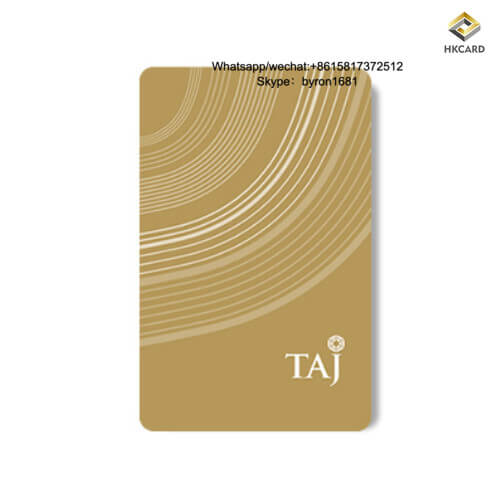Discover the wide range of smart card applications and unlock their versatility and benefits. Explore how smart cards revolutionize payment systems, access control, identification, and other industries.
Table of Contents
- Introduction: The Evolution of Smart Cards
- Smart Card Applications in Payment Systems
- Enhancing Security and Convenience
- Contactless Payments
- Loyalty Programs
- Transportation and Ticketing
- Smart Card Applications in Access Control and Identification
- Physical Access Control
- Logical Access Control
- Identification and Authentication
- Smart Card Applications in Healthcare
- Electronic Health Records
- Prescription Management
- Patient Identification
- Smart Card Applications in Telecommunications
- SIM Cards
- Mobile Payments
- Mobile ID Verification
- Smart Card Applications in Government Services
- E-Government Services
- Electronic Voting
- National ID Cards
- Smart Card Applications in Education
- Student ID Cards
- Library Access
- Cashless Transactions on Campus
- Frequently Asked Questions (FAQs)
- What are smart cards?
- How do smart cards work?
- Are smart cards secure?
- Can smart cards be hacked?
- What industries use smart cards?
- Conclusion
1. Introduction: The Evolution of Smart Cards
Smart cards have emerged as a versatile technology with numerous applications across various industries. These small plastic cards embedded with integrated circuits enable secure and efficient transactions, access control, identification, and more. Over the years, smart cards have revolutionized the way we interact with technology, enhancing security, convenience, and efficiency. In this article, we will explore the wide range of smart card applications and delve into the benefits they offer across different sectors.
2. Smart Card Applications in Payment Systems
2.1 Enhancing Security and Convenience
Smart cards have significantly transformed the landscape of payment systems by enhancing security and convenience. Unlike traditional magnetic stripe cards, smart cards store data on an embedded chip, making them less susceptible to fraudulent activities. These cards require user authentication, such as a PIN or biometric verification, adding an extra layer of security to transactions.
2.2 Contactless Payments
One of the most notable applications of smart cards is in contactless payments. With the introduction of near field communication (NFC) technology, users can now make secure payments by simply tapping their smart cards on compatible payment terminals. This feature has gained tremendous popularity, especially in retail environments, where customers can quickly complete transactions without the need for physical contact.
2.3 Loyalty Programs
Smart cards have also become an integral part of loyalty programs offered by businesses. By incorporating smart card technology, companies can track customer purchases, accumulate reward points, and offer personalized discounts and promotions. These cards enable seamless integration with point-of-sale systems, allowing customers to conveniently redeem their rewards.
2.4 Transportation and Ticketing
The transportation industry has embraced smart card technology to streamline ticketing processes and enhance passenger experiences. Smart cards, commonly known as transit cards, enable commuters to easily access public transportation systems, such as buses, trains, and subways, by simply tapping their cards at designated readers. This technology has simplified fare collection, reduced waiting times, and improved overall efficiency in transportation networks.
3. Smart Card Applications in Access Control and Identification
3.1 Physical Access Control
Smart cards have revolutionized access control systems in various industries. By integrating smart card technology into access control systems, organizations can ensure secure and efficient entry to their premises. Employees or authorized personnel can use their smart cards to gain physical access to buildings, rooms, or restricted areas. The embedded chips in smart cards store encrypted information that verifies the cardholder’s identity and grants access accordingly.
3.2 Logical Access Control
In addition to physical access control, smart cards are widely used for logical access control, particularly in the realm of information technology. By leveraging smart cards, organizations can enforce secure access to computer systems, networks, and sensitive data. Users can insert their smart cards into card readers connected to computers, authenticating their identity and granting them access to authorized resources.
3.3 Identification and Authentication
Smart cards serve as reliable identification and authentication tools in various scenarios. They are commonly used in government-issued identification cards, employee badges, and visitor passes. The secure storage and encryption capabilities of smart cards ensure that the identity information stored on the card remains protected, reducing the risk of identity theft and unauthorized access to sensitive areas.
4. Smart Card Applications in Healthcare
4.1 Electronic Health Records
Smart cards play a crucial role in the digitization of healthcare systems. They enable the secure storage and retrieval of electronic health records (EHRs), allowing healthcare professionals to access patient information efficiently. Smart cards also facilitate interoperability between healthcare providers, ensuring seamless data exchange while maintaining privacy and data security.
4.2 Prescription Management
In the pharmaceutical industry, smart cards contribute to effective prescription management. With the use of smart cards, doctors can securely generate electronic prescriptions, which are then stored on the patient’s card. Pharmacists can access these prescriptions, ensuring accurate dispensing of medications and minimizing the risk of errors.
4.3 Patient Identification
Smart cards are utilized for accurate patient identification in healthcare settings. Each patient is issued a unique smart card that contains their medical records, identification details, and relevant health information. This simplifies the registration process, eliminates paperwork, and enables healthcare providers to deliver personalized care based on the patient’s medical history.
5. Smart Card Applications in Telecommunications
5.1 SIM Cards
SIM (Subscriber Identity Module) cards are a prime example of smart card applications in the telecommunications industry. SIM cards securely store user information, such as mobile numbers, contacts, and network authentication keys. They enable seamless transfer of a user’s mobile identity across devices, ensuring uninterrupted connectivity and personalized services.
5.2 Mobile Payments
The integration of smart card technology into mobile devices has paved the way for convenient and secure mobile payments. Smartphones equipped with NFC capabilities allow users to make payments by simply tapping their devices on contactless payment terminals. By securely storing payment information on the device’s embedded smart card, users can enjoy a hassle-free payment experience.
5.3 Mobile ID Verification
Smart cards also find application in mobile ID verification processes. Governments and organizations can issue smart card-based identification credentials, enabling individuals to prove their identity using their mobile devices. This technology offers a secure and efficient alternative to traditional identification methods, promoting seamless interactions in both physical and digital environments.
6. Smart Card Applications in Government Services
6.1 E-Government Services
Smart cards have revolutionized the delivery of government services by enabling secure and efficient e-government applications. Citizens can use smart cards to access various government services online, such as tax filing, license renewals, and social security benefits. This technology streamlines administrative processes, reduces paperwork, and enhances the overall efficiency of public service delivery.
6.2 Electronic Voting
Smart cards play a vital role in secure electronic voting systems. By issuing smart cards to eligible voters, governments can ensure secure and accurate voting processes. Smart card-based voting systems provide robust authentication, prevent voter fraud, and enable efficient vote counting, contributing to transparent and trustworthy democratic practices.
6.3 National ID Cards
National ID cards equipped with smart card technology offer a secure and reliable form of identification for citizens. These cards store personal data, biometric information, and other essential details in an encrypted format. Smart card-based national ID systems streamline identity verification processes, enhance national security, and enable efficient delivery of government services.
7. Smart Card Applications in Education
7.1 Student ID Cards
Smart cards have become an integral part of student identification systems in educational institutions. Student ID cards embedded with smart chips enhance security and enable various functionalities, such as access control to campus facilities, attendance tracking, library services, and cashless transactions within the campus ecosystem. These cards simplify administrative processes and enhance the overall student experience.
7.2 Library Access
Smart cards streamline library access and borrowing processes. Students and faculty members can use their smart cards to check out books, access digital resources, and manage their library accounts. This technology promotes efficient book management, reduces manual paperwork, and facilitates the seamless circulation of library materials.
7.3 Cashless Transactions on Campus
Smart cards enable cashless transactions within educational institutions. By loading funds onto their smart cards, students can make purchases at campus stores, cafeterias, vending machines, and other on-campus facilities. This eliminates the need for carrying physical cash, promotes financial transparency, and simplifies transaction tracking for both students and administrative staff.
8. Frequently Asked Questions (FAQs)
8.1 What are smart cards?
Smart cards are plastic cards embedded with integrated circuits that store and process data. These cards contain microprocessors or memory chips, enabling them to perform various functions, such as secure transactions, access control, and identification.
8.2 How do smart cards work?
Smart cards work by storing data on an embedded chip, which is securely encrypted. When the card is inserted into a compatible reader or tapped on a contactless reader, the embedded chip communicates with the reader, allowing data transfer and authentication processes to occur.
8.3 Are smart cards secure?
Yes, smart cards offer a high level of security. The embedded chips on smart cards use cryptographic algorithms to protect the stored data, making it difficult for unauthorized parties to access or tamper with the information.
8.4 Can smart cards be hacked?
While no system is completely immune to hacking attempts, smart cards are designed with robust security measures to minimize the risk of unauthorized access. The encryption and authentication mechanisms employed by smart cards make them significantly more secure than traditional magnetic stripe cards.
8.5 What industries use smart cards?
Smart cards find applications in various industries, including finance, telecommunications, healthcare, transportation, government services, and education. They are used in payment systems, access control, identification, and many other areas where secure and efficient transactions are required.
9. Conclusion
Smart cards have emerged as powerful tools that revolutionize numerous industries by enabling secure and efficient transactions, access control, and identification processes. From payment systems to access control, smart cards have unlocked a new level of versatility and benefits across various sectors. Whether it’s enhancing security in payment transactions, streamlining access control and identification processes, or improving service delivery in healthcare and government sectors, smart cards continue to play a pivotal role in transforming the way we interact with technology. With their extensive range of applications and the myriad of advantages they offer, smart cards are poised to shape the future of multiple industries, ensuring seamless and secure experiences for individuals and organizations alike.
HKCARD ELECTRONICS CO.,LIMITED is your best choice for T#SmartCards #Applications #Versatility #Benefits #PaymentSystems #AccessControl #Identification Versatile Applications of Smart Cards, Benefits of Smart Card Usage, Revolutionizing Industries with Smart Cards, Smart Cards in Payment Systems and Access Control
Best Regards
Byron
HKCARD ELECTRONICS CO.,LIMITED
Phone/Whatsapp/wechat:+8615817372512
skype:byron1681
Email:byronhan@cardmfg.com /byronhan1@gmail.com




